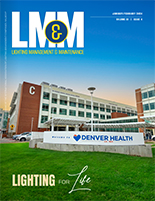 In response to news stories generated by the American Medical Association’s (AMA) community guidance on street lighting and its potential effects on human health and the environment, the U.S. Department of Energy (DOE) has assembled several helpful resources on the topics, including a new list of Frequently Asked Questions that look at the matter in considerable depth, providing useful information intended to help clarify some of the underlying science.
Although media coverage often conveys the impression that LED street lighting is the cause of the issues being raised — which mainly focus on short-wavelength (“blue”) content — in fact it offers key solutions to those issues. That’s because, unlike conventional street lighting, LED systems can be adjusted to provide only the level of illumination needed at any given time, and when well-designed they also offer a high degree of control over the direction in which light is emitted, which helps reduce glare, light trespass, and uplight.
This improved control, among other things, also means that LED street lighting often meets illumination requirements with just half of the lumens of the conventional system it replaces. All of this reduces the effects from any increased short-wavelength content in the LEDs — and may even more than offset those effects.
The resources are available on the DOE website.
|
|
Best regards,
Jim Brodrick |



